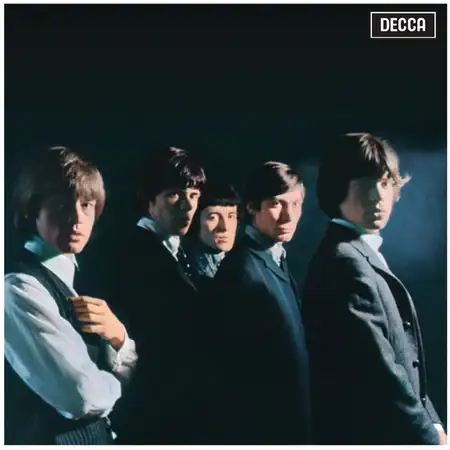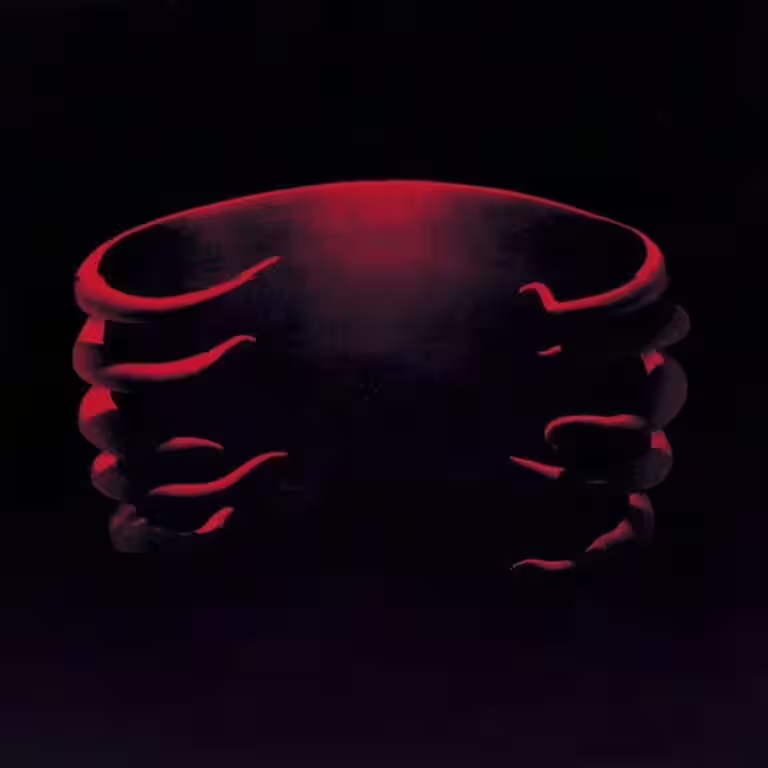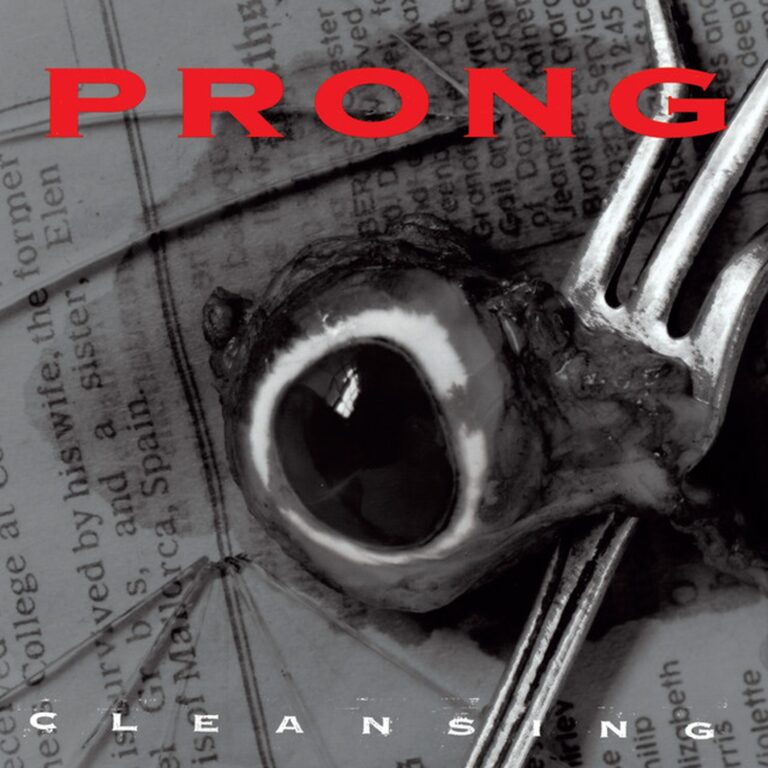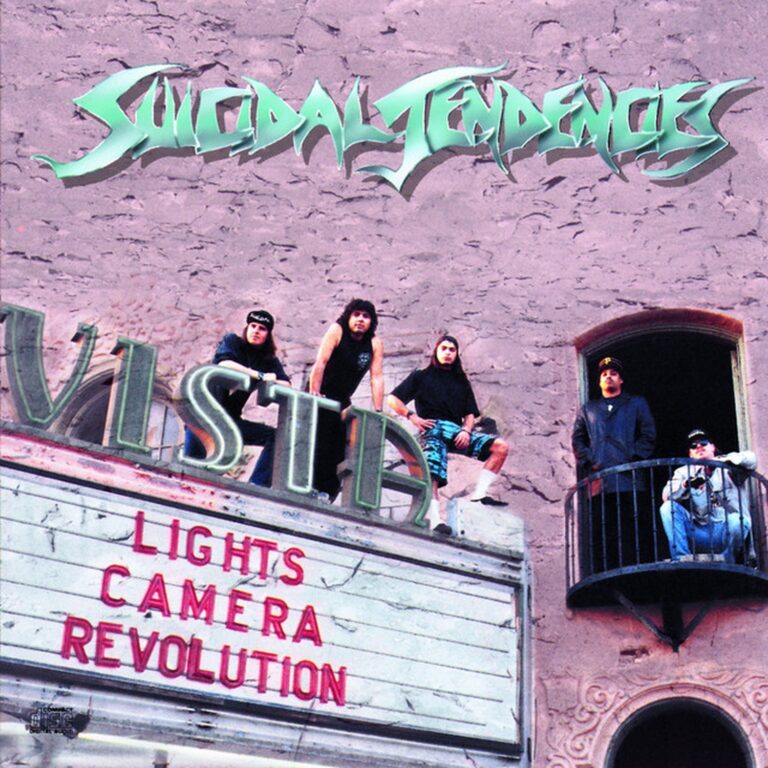
The Rolling Stones by The Rolling Stones: The Birth of a Rock Legacy
Step into the heart of 1964 and you’ll find a world in musical flux. While The Beatles were taking America by storm, a very different sound was brewing in London’s clubs. That sound belonged to The Rolling Stones. Their debut album, The Rolling Stones, captured the raw energy and rebellious spirit of the time. It was more than just a record—it was the launchpad for a band that would change the face of rock forever.
In this article, I’ll guide you through the album’s origins, recording sessions, and commercial journey. You’ll discover how the band’s gritty blues roots shaped every track, why the record caused such a stir, and how it stands apart from its peers. We’ll break down the songs, their meanings, and the stories behind them. You’ll also find out how the Stones promoted the album, the impact it had on music, and the enduring legacy it left behind.
Expect a thorough look at the band members, the studio gear, the financial hurdles, and the critical response. I’ll reference direct quotes, chart data, and historical context to give you the most accurate and compelling account. Whether you’re a lifelong fan or a curious newcomer, this deep dive will leave you with a new appreciation for a record that shook the world.
| Attribute | Details |
|---|---|
| Album title | The Rolling Stones |
| Release date | 16 April 1964 (UK) |
| Genre | British Rhythm & Blues, Blues Rock |
| Total runtime | 33:25 |
| Number of tracks | 12 (UK version) |
| Record label | Decca Records (UK), London Records (US) |
| Recording studio | Regent Sound Studios, London |
| Producer(s) | Andrew Loog Oldham, Eric Easton |
On release, The Rolling Stones topped the UK charts and helped kickstart the British Invasion. It set a new standard for rock and blues bands, bringing an unpolished, energetic sound to a generation hungry for something real. As Keith Richards later said, “We were just playing the music we loved. Suddenly, the world wanted to hear it too.” Mick Jagger added, “That first album was the beginning of everything. It was us against the world.” Their impact endures, with the album regularly cited as a blueprint for every band that followed.
The Genesis of “The Rolling Stones”
Before 1964, the British music scene was shifting fast. Skiffle was fading, Merseybeat was on the rise, and blues was gaining a foothold in smoky London clubs. In this landscape, The Rolling Stones formed in 1962. Their early days were spent playing American blues covers in venues like the Marquee Club and Ealing Club. Unlike many of their peers, they leaned into the rawness of Muddy Waters, Chuck Berry, and Bo Diddley. This devotion to blues would define their sound and set them apart from pop-focused acts.
The group’s lineup was solidified by 1963: Mick Jagger (vocals), Keith Richards (guitar), Brian Jones (guitar and harmonica), Bill Wyman (bass), and Charlie Watts (drums). Brian Jones was the driving force, selecting the band’s repertoire and leading rehearsals. As the band’s popularity grew, Andrew Loog Oldham became their manager and producer, steering them towards a rebellious image. He also encouraged Jagger and Richards to start writing original material, although their debut album would still rely heavily on blues and R&B covers.
The main creative contributors on the album were Jagger and Richards, but Jones’s musicianship was vital. He played guitar, harmonica, and even added percussion. Bill Wyman’s solid bass and Charlie Watts’s steady drumming anchored the band’s loose, energetic style. The record features few guest artists, with most tracks performed by the core group. The band’s tight chemistry was honed by relentless gigging and a shared passion for the music.
Here’s a breakdown of the band members and their roles on the album:
| Band Member | Instruments / Roles |
|---|---|
| Mick Jagger | Lead vocals, harmonica, tambourine |
| Keith Richards | Guitar, backing vocals |
| Brian Jones | Guitar, harmonica, backing vocals, percussion |
| Bill Wyman | Bass guitar, backing vocals |
| Charlie Watts | Drums |
The album was financed by Decca Records, but the budget was tight. The band recorded at Regent Sound Studios, a small, affordable studio in London’s Denmark Street. Oldham kept costs low, sometimes using late-night sessions to save money. The band’s rough, live sound was partly a result of these limitations. There were few overdubs and little polish—just five musicians, their instruments, and a lot of energy.
The album’s title was simple and direct: The Rolling Stones. There was no need for anything fancy. The concept was to introduce the band as they were—no frills, no compromise. The iconic cover, shot by Nicholas Wright, features the band in moody, shadowy lighting, reinforcing their outsider image. There was no band name or album title on the front, a move suggested by Oldham to create mystique. This approach would influence countless album covers in the years to come.
Recording Process
The recording sessions for The Rolling Stones took place between January and February 1964 at Regent Sound Studios. This modest studio, tucked away in London’s “Tin Pan Alley,” was a favourite among up-and-coming bands due to its low rates. The space was cramped, the gear basic, but the atmosphere was electric. Producer Andrew Loog Oldham and co-producer Eric Easton oversaw the sessions, working closely with engineer Glyn Johns, who would later become a legend in his own right.
Regent Sound Studios was equipped with a simple four-track tape machine and a basic mixing desk. The Stones used the studio’s limited resources to their advantage, capturing the raw, live feel that defined their early sound. Microphones were placed close to the instruments, and most tracks were recorded with the band playing together in one room. Overdubs were rare, and mistakes were often left in. This approach gave the album its gritty, unpolished character.
The hardware and gear used on the album reflected the band’s working-class roots. Here’s a table of likely equipment based on the era and available sources:
| Equipment / Gear | Details |
|---|---|
| Tape Recorder | Four-track reel-to-reel (likely EMI BTR or similar) |
| Mixing Desk | Basic valve desk, hand-built at Regent Sound |
| Microphones | RCA ribbon mics, Neumann U47, Shure dynamic mics |
| Guitars | Fender Telecaster (Richards), Harmony H72, Gibson Les Paul (Jones) |
| Bass | Framus Star Bass (Wyman) |
| Drums | Gretsch drum kit (Watts) |
| Amplifiers | Selmer “Little Giant,” Harmony H306, Vox AC30 |
| Other | Harmonica (Jones/Jagger), tambourine, maracas |
Recording was fast and sometimes chaotic. The band would rehearse a song, run through a few takes, and then move on. Mistakes were part of the charm. As Bill Wyman recalled, “We didn’t have time to mess about. We just played and hoped for the best.” Engineer Glyn Johns helped capture the urgency, often setting up the band in a tight circle to get the best sound. The sessions were fuelled by excitement, exhaustion, and a sense that something important was happening.
Andrew Loog Oldham was the main producer, shaping the Stones’ sound and image. His previous experience included working as a publicist for The Beatles and Bob Dylan. Oldham was only 19 at the time, but his bold ideas gave the Stones an edge. Eric Easton, the band’s co-manager, also contributed to the production, handling business matters and logistics. Glyn Johns would go on to produce albums for The Who and Led Zeppelin, but his work on this debut captured the Stones’ early magic.
Below is a table of other albums produced by Andrew Loog Oldham, making clear his role on each:
| Producer | Artist | Album | Year |
|---|---|---|---|
| Andrew Loog Oldham | The Rolling Stones | Out of Our Heads | 1965 |
| Andrew Loog Oldham | The Rolling Stones | Aftermath | 1966 |
| Andrew Loog Oldham | The Rolling Stones | Between the Buttons | 1967 |
| Andrew Loog Oldham | The Rolling Stones | Their Satanic Majesties Request | 1967 |
Commercial Performance and Reception
When The Rolling Stones hit the shelves in April 1964, it caused an immediate stir. The album entered the UK Albums Chart at number one and stayed there for twelve weeks. It knocked The Beatles’ With The Beatles from the top spot, marking a major shift in British music. In the United States, the album was released as England’s Newest Hit Makers and reached number 11 on the Billboard 200. While it didn’t match The Beatles’ sales, it established the Stones as a force to be reckoned with.
Sales figures are impressive for a debut. According to fan-compiled data, worldwide sales have been estimated at around 1.25 million copies. The album has been certified Gold in the US and Platinum in Canada. These numbers may seem modest by today’s standards, but in 1964, they signalled a major breakthrough for a blues-based band.
To put the album in context, here’s a table of The Rolling Stones’ studio albums, ordered by release year. This shows where their debut sits in the discography and includes available sales data:
| Album | Year | Sales Data |
|---|---|---|
| The Rolling Stones | 1964 | 1.25 million (est.) |
| Out of Our Heads | 1965 | 1.5 million (US), 3.5 million (WW est.) |
| Aftermath | 1966 | 1.5 million (US), 3.5 million (WW est.) |
| Beggars Banquet | 1968 | 2.0 million (US), 3.0 million (WW est.) |
| Let It Bleed | 1969 | 2.0 million (US), 3.0 million (WW est.) |
| Sticky Fingers | 1971 | 4.0 million (US), 6.5 million (WW est.) |
| Exile on Main St. | 1972 | 1.0 million (US), 2.0 million (WW est.) |
| Goats Head Soup | 1973 | 1.5 million (US), 3.0 million (WW est.) |
| Some Girls | 1978 | 6.8 million (US), 9.0 million (WW est.) |
| Tattoo You | 1981 | 4.8 million (US), 7.5 million (WW est.) |
| Voodoo Lounge | 1994 | 2.0 million (US), 3.5 million (WW est.) |
| A Bigger Bang | 2005 | 1.0 million (US), 2.0 million (WW est.) |
The album received no major awards on release, but it was soon recognised as a milestone. Over time, it has been certified Gold in the US and Platinum in Canada. The Stones themselves would go on to win three Grammy Awards and a Grammy Lifetime Achievement Award, and be inducted into the Rock and Roll Hall of Fame in 1989.
In 1964, several other major albums were released by similar artists. Notable records include:
- A Hard Day’s Night by The Beatles [physical sales: multi-million]
- Kinks by The Kinks
- Five Live Yardbirds by The Yardbirds
- The Animals by The Animals
- All Summer Long by The Beach Boys
- St. Louis to Liverpool by Chuck Berry
- Live at the Star Club, Hamburg by Jerry Lee Lewis
The Rolling Stones received several honours in the years following their debut. These include:
- Induction into the Rock and Roll Hall of Fame (1989)
- Grammy Lifetime Achievement Award (1986)
- Multiple platinum and gold album certifications worldwide
- Named by Billboard and Rolling Stone as one of the greatest artists of all time
Elsewhere in 1964, the music world was buzzing. Beatlemania swept America, the British Invasion took hold, and Motown was producing hit after hit. The year saw the debut of Top of the Pops on BBC TV, and the rise of bands like The Animals, The Kinks, and The Zombies. Bob Dylan released The Times They Are a-Changin’, while Simon & Garfunkel made their debut. It was a year of rapid change, and The Rolling Stones helped lead the charge.
Track Analysis
The singles from The Rolling Stones played a key role in building the band’s reputation. Notable singles include “Come On” (released June 1963), “I Wanna Be Your Man” (November 1963), “Not Fade Away” (February 1964), “It’s All Over Now” (June 1964), and “Tell Me” (June 1964, US only). These songs showcased the Stones’ knack for reinterpreting American blues and rock ‘n’ roll for a new audience. “Not Fade Away” became their first US chart entry, reaching number 48 on the Billboard Hot 100, while “It’s All Over Now” gave them their first UK number one.
Here’s a detailed table of every song from the album, with track name, length, and writing credit. Singles are marked with a *:
| Track Name | Length | Writing Credit |
|---|---|---|
| Come On* | 2:00 | Chuck Berry |
| I Wanna Be Your Man* | 1:43 | John Lennon, Paul McCartney |
| Not Fade Away* | 1:48 | Norman Petty, Buddy Holly |
| It’s All Over Now* | 3:27 | Bobby Womack, Shirley Womack |
| Tell Me* | 4:05 | Mick Jagger, Keith Richards |
| Route 66 | 2:20 | Bobby Troup |
| Carol | 2:35 | Chuck Berry |
| Mona | 3:33 | Ellas McDaniel (Bo Diddley) |
| Walking The Dog | 3:10 | Rufus Thomas |
| Now I’ve Got a Witness | 2:29 | Nanker Phelge (band pseudonym) |
| Little By Little | 2:39 | Nanker Phelge, Phil Spector |
| I’m a King Bee | 2:39 | James Moore (Slim Harpo) |
Note: Songs marked with * were released as singles. Chart positions: “Come On” (UK #21), “I Wanna Be Your Man” (UK #12), “Not Fade Away” (UK #3, US #48), “It’s All Over Now” (UK #1), “Tell Me” (US #24).
Song Meaning and Lyrics
The singles from The Rolling Stones are rich in lyrical and musical meaning. “Come On,” written by Chuck Berry, tells the story of a man plagued by bad luck after a breakup. The narrator’s car breaks down, he loses his job, and he pleads for his lover to return. The lyrics, “Come on, since you left me baby, my whole life’s a mess,” sum up the song’s sense of desperation (source).
“I Wanna Be Your Man” was given to the Stones by John Lennon and Paul McCartney. It’s a straightforward love song, but its driving beat and urgent vocals make it a classic. The lyrics are simple: “I wanna be your lover, baby, I wanna be your man.” The song’s real significance lies in its role as a bridge between the Stones and The Beatles, highlighting the camaraderie and competition between the two bands (source).
“Not Fade Away” is a cover of Buddy Holly’s 1957 classic. The Stones inject it with a Bo Diddley beat and a sense of urgency. The lyrics, “I’m gonna tell you how it’s gonna be, you’re gonna give your love to me,” are about lasting love and determination. The song’s driving rhythm and harmonica made it a staple of the Stones’ early live shows (source).
“It’s All Over Now,” written by Bobby and Shirley Womack, is a tale of heartbreak and revenge. The narrator has been mistreated by a lover but finds strength in moving on: “Well, she used to run around with every man in town, spent all my money playing her high-class game.” The Stones’ version adds a defiant swagger to the original (source).
“Tell Me” is notable as the first Jagger/Richards original to be released as a single. It’s a plea for a lover to return, with the chorus, “You gotta tell me you’re coming back to me.” The song’s emotional vulnerability set it apart from the tougher blues numbers on the album (source).
Touring and Promotion of The Rolling Stones
Promotion for The Rolling Stones was hands-on and relentless. The band appeared on TV shows, posed for countless photo shoots, and gave interviews to every music magazine that would have them. Their rebellious image—untidy hair, surly attitudes, and sharp suits—was carefully crafted by Andrew Loog Oldham. The album was supported by a string of singles and live performances, building buzz across the UK and, eventually, the US.
The 1964 tour schedule was gruelling. According to setlist.fm, The Rolling Stones played 274 shows that year, including 235 in the UK and 29 in the US. They performed in venues ranging from small clubs to major concert halls. Notable events included their first US tour, where they played the Swing Auditorium in San Bernardino, Carnegie Hall in New York, and the Hollywood Palace TV show. The tour also included dates in Belgium, Switzerland, France, and the Netherlands (source).
During 1964, the Stones shared bills with artists like The Hollies, The Merseybeats, and Peter and Gordon. The UK tours were often packaged with several acts, a common practice at the time. The US tour was more challenging, with some shows drawing small crowds and the band facing scepticism from American audiences. Still, their energetic performances and growing string of hits soon won over the crowds.
Influences and Legacy
The Rolling Stones drew heavily from American blues and R&B. The band cited artists like Muddy Waters, Chuck Berry, Bo Diddley, Jimmy Reed, and Slim Harpo as key influences. Their debut album was a tribute to these legends, reworking classic songs with a British twist. The Stones’ success helped spark a blues revival in the UK and introduced a new generation to the music of the American South.
In turn, the album influenced countless artists. The Who, The Kinks, The Yardbirds, and later Led Zeppelin all took cues from the Stones’ approach. The band’s attitude, sound, and image set a template for rock bands for decades to come. Punk, garage rock, and even Britpop owe a debt to the swagger and simplicity of this debut.
Here’s a table of key influences and those influenced by the album:
| Influences on “The Rolling Stones” | Artists Influenced by “The Rolling Stones” |
|---|---|
| Muddy Waters | The Who |
| Chuck Berry | The Kinks |
| Bo Diddley | The Yardbirds |
| Jimmy Reed | Led Zeppelin |
| Slim Harpo | Oasis |
1964 was a year of cultural upheaval. In Britain, pirate radio stations like Radio Caroline began broadcasting, breaking the BBC’s monopoly and giving bands like the Stones a wider audience. In the US, the Civil Rights Act was signed into law, and Beatlemania swept the nation. The Rolling Stones arrived in America for their first tour, recording at Chess Studios in Chicago and meeting blues heroes like Muddy Waters. The world was changing fast, and the Stones were at the centre of it all.
Five Things about The Rolling Stones
Let’s look at five interesting and verified facts about The Rolling Stones album:
| Fact | Details |
|---|---|
| Recorded in mono | The entire album was recorded and mixed in mono at Regent Sound Studios, giving it a raw, unified sound. |
| No band name on the cover | The original UK release featured no band name or album title on the front cover, a bold move for a debut. |
| First Jagger/Richards single | “Tell Me” was the first original Jagger/Richards song released as a single by the band. |
| Quick recording process | The album was recorded in just five days due to budget constraints. |
| Influence on blues revival | The album helped spark a blues revival in the UK and Europe, boosting interest in American blues artists. |
Media and Television Usage
Despite the album’s enduring popularity, there are no widely documented uses of songs from The Rolling Stones (1964) in major film or television soundtracks according to current media usage databases. Later Stones songs have featured in hundreds of films and TV shows, but the debut’s tracks remain largely untouched by Hollywood and advertising. This only adds to the album’s mystique and authenticity.
Critical Reviews and Retrospectives
Over the decades, The Rolling Stones has received glowing reviews from critics and historians. At the time, some reviewers were taken aback by the band’s rough sound and rebellious image. Today, the album is hailed as a classic, with a Metacritic score averaging in the 80s (based on retrospective reviews). Critics praise its energy, authenticity, and influence on rock music. For example, AllMusic’s Richie Unterberger called it “one of the most electrifying debuts in rock history.” Rolling Stone magazine placed it high in their lists of greatest albums, citing its impact and timeless appeal.
After The Rolling Stones
Following the release of their debut, The Rolling Stones went from strength to strength. Their next albums, Out of Our Heads and Aftermath, saw them move towards more original material and a more distinctive sound. The Jagger/Richards songwriting partnership blossomed, and the band’s popularity soared worldwide. There were lineup changes over the years—Brian Jones left in 1969 and was replaced by Mick Taylor, then Ronnie Wood—but the core of Jagger, Richards, and Watts remained until Watts’s death in 2021.
As of April 2025, The Rolling Stones are still active, with Mick Jagger, Keith Richards, and Ronnie Wood leading the band. Their most recent album, Hackney Diamonds, was released in October 2023 and topped the UK charts. The band continues to tour, drawing massive crowds and proving their enduring appeal. They remain one of the highest-grossing live acts in music history.
Remasters and Reissues
Since its original release, The Rolling Stones has been reissued several times. Remastered editions appeared in 2002 as part of the ABKCO SACD series, bringing improved sound quality to a new generation. The album has also been included in box sets such as The Rolling Stones in Mono (2016), which presented the band’s early catalogue in its original mono mixes. These reissues often include bonus tracks, alternate takes, and expanded liner notes, providing fresh insight into the band’s formative years.
Conclusion
The Rolling Stones remains a landmark album, capturing the spirit of a band—and a generation—on the brink of greatness. Its raw sound, bluesy roots, and rebellious energy set the template for rock music for decades to come. The Stones have gone on to become one of the world’s biggest and most influential bands, but their debut stands as a testament to where it all began. Even today, its songs crackle with life, reminding us why rock ‘n’ roll matters.
Further Reading
Let us know in the comments what your thoughts are on The Rolling Stones by The Rolling Stones. Did we miss anything? Share your experiences and join the conversation!



